Results 3,601 to 3,610 of 12096
Thread: Anandtech News
-
01-21-14, 08:30 PM #3601
Anandtech: Amped Wireless: 802.11ac WiFi with High-Gain Antennas
It’s been a while since we last looked at Amped Wireless, a company with a primary goal being the development of higher quality and longer range WiFi products. Wireless testing being what it is – namely, a pain in the rear – I haven’t completed any of the 802.11ac router reviews yet, but the AC1200 Amped Wireless router I’ve been testing has worked well. Amped now has several newer products coming out that supersede the AC1200 router, with an AC1900 router topping their lineup and providing four stream 2.4GHz support (600Mbps) and three stream 5GHz support (up to 1300Mbps on 11ac, or 450Mbps on 11n). They’ve also added a USB 3.0 port to several of their routers to provide high-speed access to network storage, which is a potentially useful feature.
The wireless routers are now dressed in black, while the repeaters/range extenders use similar hardware that’s tuned for a slightly different workload and their casings are white. Amped also has access points available, which are more for business, with the highest model currently being AC1200 (two stream 2.4GHz/5GHz), which comes in a steel-grey color. The AC1200 RTA15 router has been shipping for a few months now with an MSRP of $190, while we’re still waiting for the new AC1900 model to begin shipping. Similarly, the REA20 range extender is currently shipping with a $200 MSRP, and we’re waiting for availability on the AC1900 range extender.
Along with the routers, repeaters, and access points, Amped has a couple new 802.11ac client adapters. One is the ACA1, an AC1200 USB WiFi adapter with USB 3.0 connectivity that supports two streams (300Mbps/867Mbps) and can be used with any suitable laptop or desktop. USB 2.0 compatibility is provided as well, but performance will potentially be lower due to the limited bandwidth offered. The second client adapter is the PCI20E, and AC1200 WiFi PCI-E adapter, which has similar performance but comes with a PCI-E x1 expansion card for use in your desktop. The ACA1 is already shipping with a $90 MSRP, while the PCI20E is currently on pre-order with an MSRP of $80, and availability is expected in March.
The potentially fastest routers at CES support up to four streams 802.11ac (1733Mbps), but the only four stream solution currently available comes from Quantenna. Considering most of Amped’s other products use Realtek chipsets, they may not bother with a four stream 11ac router, so the AC1900 line is likely to be the highest performance router and range extender from Amped for the time being.
Gallery: Amped Wireless: 802.11ac WiFi with High-Gain Antennas_thumb.jpg)
_thumb.jpg)
_thumb.jpg)
_thumb.jpg)
_thumb.jpg)
_thumb.jpg)

More...
-
01-22-14, 08:00 AM #3602
Anandtech: Floating point peak performance of Kaveri and other recent AMD and Intel c
With the launch of Kaveri, some people have been wondering if the platform is suitable for HPC applications.  Floating point peak performance of the CPU and GPU  on both fp32 and fp64 datatypes is one of the considerations. At launch time, we were not clear on the fp64 performance of Kaveri's GPU but now we have official confirmation from AMD that it is 1/16th the rate of fp32 (similar to most GCN based GPUs except the flagships) and we have verified this on our 7850K by running FlopsCL.  
I am taking this opportunity to summarize the info about Kaveri, Trinity, Llano and Intel's competing platforms Haswell and Ivy Bridge on both the CPU and GPU side. We provide a per-cycle estimate for the chips as well as peak calculated in gflops. The estimates are chip-wide, i.e. already take into account the number of cores or modules. Due to turbo boost, it was difficult to decide what frequency to use for peak calculations. For CPUs, we are using the base frequency and for GPUs we are using the boost frequency because in multithreaded and/or heterogeneous scenarios the CPU is less likely to turbo. In any case, we believe our readers are smart enough to calculate peaks at any frequency they want, given that we already supply per-cycle peaks :)
The peak CPU performance will depend on the SIMD ISA that your code was written and compiled for. We consider three cases: SSE, AVX (without FMA) and AVX with FMA (either FMA3 or FMA4).
 
It is no secret that AMD's Bulldozer family cores (Steamroller in Kaveri and Piledriver in Trinity) are no match for recent Intel cores in FP performance due to the shared FP unit in each module. As a comparison point, one core in Haswell has the same floating point performance per cycle as two modules (or four cores) in Steamroller.Platform Kaveri Trinity Llano Haswell Ivy Bridge Chip 7850K 5800K 3870K 4770K 3770K CPU frequency 3.7 GHz 3.8 GHz 3.0GHz 3.5GHz 3.5GHz SSE fp32 (/cycle) 16 16 32 32 32 SSE fp64 (/cycle) 8 8 16 16 16 AVX fp32 (/cycle) 16 16 - 64 64 AVX fp64 (/cycle) 8 8 - 32 32 AVX FMA fp32 (/cycle) 32 32 - 128 - AVX FMA fp64 (/cycle) 16 16 - 64 - SSE fp32 (gflops) 59.2 60.8 96 112 112 SSE fp64 (gflops) 29.6 30.4 48 56 56 AVX fp32 (gflops) 59.2 60.8 - 224 224 AVX fp64 (gflops) 29.6 30.4 - 112 112 AVX FMA fp32 (gflops) 118.4 121.6 - 448 - AVX FMA fp64 (gflops) 59.2 60.8 - 224 -
Now onto GPU peaks. Here, for Haswell, we chose to include both GT2 and GT3e variants.
The fp64 support situation is a bit of a mess because some GPUs only support fp64 under some APIs.  The fp64 rate of Intel's GPUs does not appear to be published but David Kanter provides an estimate of 1/4 speed compared to fp32. However Intel only enables fp64 under DirectCompute but does not enable fp64 under OpenCL for any of its GPUs.Platform Kaveri Trinity Llano Haswell GT3e Haswell GT2 Ivy Bridge Chip 7850K 5800K 3870K 4770R 4770K 3770K GPU frequency 720 MHz 800 MHz 600 MHz 1.3 GHz 1.25 GHz 1.15 GHz fp32/cycle 1024 768 800 640 320 256 fp64/cycle (OpenCL) 64 48** 0 0 0 0 fp64/cycle (Direct3D) 64 0? 0 160 80 64 fp32 gflops 737.3 614 480 832 400 294.4 fp64 gflops (OpenCL) 46.1 38.4** 0 0 0 0 fp64 gflops (Direct3D) 46.1 0? 0 208 100 73.6
Situation on AMD's Trinity/Richland is even more complicated. fp64 support under OpenCL is not standards-compliant and depends upon using a proprietary extension (cl_amd_fp64). Trinity/Richland do not appear to support fp64 under DirectCompute (and MS C++ AMP implementation) from what I can tell. From an API standapoint, Kaveri's GCN GPUs should work fine on for fp64 under all APIs.
Some of you might be wondering whether Kaveri is good for HPC applications. Compared to discrete GPUs, applications that are already ported and work well on discrete GPUs will continue to be best run on discrete GPUs.  However, Kaveri and HSA will enable many more applications  to be GPU accelerated. 
Now we compare Kaveri against Haswell. In applications depending upon fp64 performance, conditions are not generally favorable to Kaveri. Kaveri's fp64 peak including both the CPU and GPU is only about 110 gflops.  You will generally be better off first optimizing your code for AVX and FMA instructions and running on Haswell's CPU cores. If you are using Windows 8,  you might also want to explore using Iris Pro through C++ AMP in conjunction with the CPU. Overall I doubt we will see Kaveri being used for fp64 workloads.
For heterogeneous fp32 applications, Kaveri should outperform Haswell GT2 and Ivy Bridge.  Haswell GT3e will again be a strong contender on Windows given the extremely capable Haswell CPU cores and Iris Pro graphics.  Intel's GPUs  do not currently support OpenCL under Linux, but a driver is being worked on.  Thus, on Linux, Kaveri will simply win out on fp32 heterogeneous applications. However, even on Windows Haswell GT3e will get strong competiton from Kaveri.  While AMD has advantages such as excellent GCN architecture and HSA software stack (when ready) enabling many more applications to take advantage of GPU, Iris Pro will have the eDRAM to potentially provide much improved bandwidth and the backing of strong CPU cores.
I hope I have provided a fair overview of the FP capabilities of each platform. Application performance will of course depend on many more factors. Your questions and comments are welcome.

More...
-
01-22-14, 08:31 AM #3603
Anandtech: OCZ Vertex 460 (240GB) Review
The last few months have not been easy at OCZ. After long-lasting financial issues, the company filed for bankruptcy on November 27th and a week later Toshiba announced that it will be acquiring the assets for $35 million. OCZ is currently surrounded by uncertainty, at least from a consumer's perspective. The details of the acquisition are scarce at best and OCZ only announced that Toshiba will be funding them to ensure normal operation during the acquisition process. I was hoping to have an update about OCZ's situation (especially about existing product warranties) but I was told by OCZ that they can't shed any light on the deal until it closes. Assuming the acquisition process is on schedule, we should expect to hear more in the next couple of weeks. Meanwhile, OCZ continues to do business as usual and the Vertex 460 is a sign of that. Already showcased at CES a couple weeks ago, the drive is now ready for release. Read on to find out how the drive performs!

More...
-
01-22-14, 06:00 PM #3604
Anandtech: Razer’s Project Christine: A Modular PC Prototype
It’s my last CES post (finally, I know), but I saved one of the more innovative ideas for the end. Coming courtesy of Razer, Project Christine ran away from CES with numerous awards and accolades. There were other items on display at Razer as well – like the “Nabu” wearable fitness band/smartwatch – but most of the products have already been launched so I won’t dwell on them. And as for Nabu, the idea isn’t bad but the early models shown at CES felt a bit too bulky/uncomfortable to me. The big news in my book was the modular PC, so let’s take a closer look at what Razer has created.
First, it’s important to note that the two Christine prototypes shown at CES are apparently not functional (or at least, no longer functional after shipping?), which is unfortunate as we would have loved to see a more real-world demonstration. Anyway, the idea is that you have this modular case (tower/column) where you can plug in GPUs, HDDs/SSDs, and other devices that come in self-contained modules. Need a faster GPU? No longer do you open up your PC and unscrew the old GPU and then install the new GPU; instead, you simply pop out the old module and add a new one – or in the case of CrossFire and SLI systems, you could simply plug in a second (or third?) GPU. Or perhaps you need more storage; simply pop in another SSD module and away you go.
Take one look at the Christine prototype and you might start to wonder about cooling. Instead of air-cooling or even liquid-cooling, Razer is apparently using non-conductive mineral oil that circulates through all of the modules (or at least the modules that need cooling I suppose). So along with the GPUs, Power Supply, Storage, and other devices, one of the modules will likely need to be a pump + radiator. Again, it would have been great to see the PC actually running, but perhaps it’s not at that stage yet – though Razer indicated that there’s at least on working prototype that’s currently being used by their CEO.
So far so good, but rerouting PCI Express lanes to custom ports isn’t really all that difficult (relatively speaking). Where things start to break down is when we get into the idea of adding more…let’s say “unusual”…parts. Swapping GPUs is easy enough, as we already do that with our “modular” desktop PCs. The same applies to storage devices as well as things that might plug into USB ports. But what happens if you want to upgrade your CPU or chipset? And what sort of RAM is supported and where is it located? RAM is usually in close proximity to the CPU, so most likely the chipset, CPU, and RAM are all in the center column and cannot be upgraded. I suspect in the prototype such things simply aren’t possible.
What would be really ground breaking would be a modular PC where you could easily swap any and all components. Maybe that’s something Razer is hoping to deliver in the future, but imagine having the center column contain a large PCI-E backplane that could be upgraded with various options. The default model might come with 24 or 32 PCI-E lanes, while higher end backplanes could boast 48 or even 72 lanes. Perhaps the chipset would need to be part of the backplane, or maybe not – certainly it would have to be something more than a stock chipset if it were going to support differing numbers of PCI-E lanes – or at the very least, it would have to have something like a PLX switch. We could even have a design that could be upgraded to PCI-E 4.0 support in the future, and maybe something with the ability to transition between CPU platforms – so AMD, Intel, ARM, etc. That would take a lot of work and probably wouldn’t really receive much in the way of support from Intel, but it’s a nice dream.
Ultimately, it’s an idea we’d love to see flourish, but we’ll have to wait and see where Razer goes with it. We could draw a parallel with the automotive industry and their concept cars, where all sorts of cool/crazy ideas are shown but few of them ever reach the point of mass production. Right now, we have plenty of questions and Razer isn’t really providing much in the way of answers. How much would the modular PC cost – for the initial base unit as well as for the component upgrades? When will it be available (if ever)? What’s the cooling capacity? How much (if any) noise does it make? How reliable would such a device be long-term? What about durability for frequent upgraders (or if someone happens to accidentally knock if over –I mention this as someone with a few children running around the house; I like my big, sturdy box, thank you very much!)?
Even if the device may not be entirely practical, Razer has built a brand around somewhat niche products. Their peripherals have catered primarily to gamers since they first showed up, and the Razer Blade laptops are generally high quality designs if a bit expensive. The Project Christine prototypes felt pretty solid and it’s certainly an eye-catching design, though perhaps a bit too much so. If Razer brings in other partners or perhaps licenses the core elements, we might even end up with more traditional looking modular PCs that still provide an easier path to upgrades than our current devices. Now if we can just get something similar for laptops, I’ll be happy.
Gallery: Razer’s Project Christine: A Modular PC Prototype_thumb.jpg)
_thumb.jpg)
_thumb.jpg)
_thumb.jpg)
_thumb.jpg)
_thumb.jpg)

More...
-
01-24-14, 12:00 AM #3605
Anandtech: AnandTech Call for Writers: 2014
We've enjoyed steady growth at AnandTech over the past several years. Last year in particular we saw our traffic break record highs thanks to all of you. As anyone who follows the site knows very well, the list of things we have to review/cover usually exceeds our available time. To continue to grow, we need your help. We're looking for writers with a true passion for the technology we cover, a deep understanding of what's out there and a thirst for more knowledge.
We're looking for contributors to help out both with reviews as well as our short to medium form Pipeline coverage. The areas in particular we're looking for help with are listed below:
- Smartphones
- Tablets
- SoCs
- Notebooks
- Enterprise & Datacenter Coverage
- GPUs & PC Components
- Professional GPUs
If you find yourself at the intersection of knowledge and passion about any of those areas, and have some time to contribute, you're exactly what we're looking for. These are paid, part-time positions that we're looking to fill. What I need is a writing sample that demonstrates your ability to talk about any one of these topics. Your sample can be in the form of a review, a pipeline post or an analysis piece - it should be something that looks like it would fit in on AnandTech.
Once you've produced it, send it on over to callforwriters@anandtech.com. We'll read through all samples but can't guarantee a reply due to the sheer volume of submissions we tend to receive. If we like what you've sent and there's a potential fit on the team, we'll be in touch.
I'll conclude this post with a passage I wrote for our About page:
In the early days of technology reporting on the web the focus was almost exclusively on depth. We had a new medium for content that didn't come with the same restrictions as more traditional forms. We could present as much data as we felt was necessary and we could do it quicker.If the above resonates with you and you'd like to help by being a part of something different, I'd encourage you to submit a writing sample.
As the web grew, so did the approach to gaining readership. In many cases, publishers learned from the tips and tricks of more traditional media to growing their audience. The focus shifted away from ultimate understanding of what was being reported, to producing content significantly motivated by increasing traffic, or revenue, or both. Thorough observations were out; sensationalism, link baiting, and the path to shallow 10-o'clock-news reporting were in.
While I believe it's definitely easier to produce content by going this route, I don't believe it's the only way to build a well read website.

More...
-
01-24-14, 11:30 PM #3606
Anandtech: Humble Weekly Update: Endless Random Dungeons and Audiobooks
With the craziness and germ cultivation experiment known as CES now behind us, we can return to our regularly scheduled updates. For me, that means a quick look at what’s going on with Humble Bundle while I work on wrapping up some laptop reviews. The big news for the week is a collection of six rouge-like games, with the first three coming with any donation of $1 or more while the second half of the bundle is only for $6 or higher donations. Let’s break it down, as usual.
The first three games consist of Dungeons of Dredmor Complete (07/2011, 79%), which is probably the closest you’ll get to a true semi-modern take on Rogue, with a healthy dose of tongue-in-cheek humor tossed in. Hack, Slash, Loot (12/2012, N/A) is more like the original Rogue, with graphics very much of the old-school variety and somewhat more simplistic controls, but it’s still good for some simple fun on occasion. And Paranautical Activity (02/2013, N/A) changes things up with FPS action with power ups and retro neon graphics (probably my least liked of the three games).
Moving on to the three titles you get with a $6+ donation, The Binding of Isaac: Wrath of the Lamb (05/2012, N/A) is the expansion to The Binding of Isaac (09/2011, 84%), and it includes the original game along with new items, power ups, chapters, enemies, etc. The game itself is an action-heavy game with RPM elements and randomly generated levels. Similar to other rogue-like games, you’ll die…a lot…and sometimes you’ll get the right combination of items to help you survive as you dig a bit further into…your crazy bible-obsessed mother’s basement. Graphics are a smooth-running sprite-based affair that shouldn’t tax any modern system too much – one of the great benefits of these indie games. Next up, Teleglitch: Die More Edition (07/2013, 78%) is the extended edition of the original Teleglitch (12/2012, 84%). It’s a top-down view with some nice lighting effects, though I have to say the text is a bit hard on the eyes – and as you can probably guess, you should again prepare to die a lot.
Last up is by far the largest of the games, Sword of the Stars: the Pit (02/2013, 68%), but size isn’t necessarily everything (not that I’d know….) Set in the SotS universe, The Pit is yet another action-RPG, and it’s the only game in this bundle that requires Windows (Steam or DRM versions are available) – all of the other games are available for Windows, OS X, and Linux (with Steam and DRM-free versions as well). The Pit is actually my favorite of this collection, probably because I’m an old man now and like its turn-based gameplay and slightly more cerebral approach. Like Dredmor, this is a game that has a lot in common with the original Rogue style of gameplay, only with a sci-fi backstory.
If you’re like me and happen to like randomly generated dungeons (and for that, I blame my childhood spent playing Rogue many a time on an old IBM PC), this is a great collection of games. You might not want to sit down and play every one of them (repeatedly), but if you have a bit of free time they’re mostly easy to jump in and out of. They’re also pretty painful as far as I can tell in regards to permadeath, which is probably the one thing I didn’t necessarily enjoy about Rogue. One thing I’d like to see with a lot of these indie games is support for ChromeOS, though perhaps that’s because I’ve been playing around with Acer’s C720. Most of these games are very low on system requirements, and it would be great to see more good games on Chrome, but I suspect development is far easier if you’re targeting Windows (or even OSX and Linux).
And on a somewhat related note, Humble Bundle is doing their first ever audiobook bundle. I don’t actually listen to audiobooks, so it’s not really something that grabbed my attention, but most audiobooks tend to cost quite a bit of money. The eight books available for a “name your own price” ($5.95 or higher required to unlock the three extra books) are The Satanic Verses, Stolen, Abandon, Junky and Found, withHeartbreaking Work of Staggering Genius, Blood Meridian and On a Pale Horse being the bonus titles. Happy listening!
Gallery: Humble Weekly Update: Endless Random Dungeons and Audiobooks






More...
-
01-28-14, 10:00 AM #3607
Anandtech: GIGABYTE Launches BRIX Gaming: AMD A8-5557M and R9 M275X
GIGABYTE’s push on the BRIX has been with so much gusto it is hard to keep up with all the possible models coming to market and ones they are merely testing the water with.  Hot on the heels of their BRIX Pro being certified as a Steam Box at the Consumer Electronics Show, there were hints of BRIX models coming with discrete mobile graphics, namely the 8000M series.  We have received a PR from GIGABYTE regarding the next model in the stack, dubbed the BRIX Gaming.
The main hardware specifications start with an AMD A8-5557M APU, a dual module 35W Richland-based part (four threads) at 2.1 GHz (3.1 GHz Turbo), with onboard HD 8550G graphics (256 SPs @ 554/720 MHz).  On the discrete GPU side, there is an R9 M275X mobile graphics solution (specification unknown, requesting more information), but no official word if these two can be paired for a dual graphics scenario.
As with most BRIX modules, this will be a barebones unit, with space for users to include two SO-DIMM memory units and a choice of either mSATA or a 2.5” SSD.  The device comes with four USB 3.0 ports (two front, two rear), a miniPCIe WiFi module with dual band 802.11ac compatibility (with BT4.0), and VESA mounting.  Video outputs come in the form of a HDMI and mini-DisplayPort.
The unit is designed to accommodate the 2.5” SSD compared to most BRIX units (59.6mm x 115.4mm x 128mm), and depending on the exact specifications of the mobile GPU could make a nice LAN PC for on the move.  The BRIX Gaming is also being sold by Maingear, who are going to rebadge it as their “Spark” Steambox PC and should be offering users to customize the insides so it can be pre-built for them.
I have asked for confirmation of R9 M275X specifications, as well as release dates, pricing, and more detailed images of the internals.
 
Gallery: GIGABYTE Launches BRIX Gaming: AMD A8-5557M and R9 M275X


More...
-
01-28-14, 06:00 PM #3608
Anandtech: It Begins: AMD Announces Its First ARM Based Server SoC, 64-bit/8-core Opt
Around 15 months ago, AMD announced that it would be building 64-bit ARM based SoCs for servers in 2014. Less than a month into 2014, AMD made good on its promise and officially announced the Opteron A1100: a 64-bit ARM Cortex A57 based SoC.
The Opteron A1100 features either 4 or 8 AMD Cortex A57 cores. There's only a single die mask so we're talking about harvested die to make up the quad-core configuration. My guess is over time we'll see that go away entirely, but since we're at very early stages of talking about the A1100 there's likely some hedging of bets going on. Each core will run at a frequency somewhere north of 2GHz. The SoC is built on a 28nm process at Global Foundries.
Each pair of cores shares a 1MB L2 cache, for a total of up to 4MB of L2 cache for the chip. All cores share a unified L3 cache of up to 8MB in size. AMD designed a new memory controller for the Opteron A1100 that's capable of supporting both DDR3 or DDR4. The memory interface is 128-bits wide and supports up to 4 SODIMMs, UDIMMs or RDIMMs. AMD will be shipping a reference platform capable of supporting up to 128GB of Registered DDR3 DIMMs off of a single SoC.
Also on-die is an 8-lane PCIe 3.0 controller (1 x8 or 2 x4 slot configurations supported) and an 8-port 6Gbps SATA controller. AMD ensured me that the on-chip fabric is capable of sustaining full bandwidth to all 8 SATA ports. The SoC features support for 2 x 10GbE ports and ARM's TrustZone technology. 
AMD will be making a reference board available to interested parties starting in March, with server and OEM announcements to come in Q4 of this year. 
It's still too early to talk about performance or TDPs, but AMD did indicate better overall performance than its Opteron X2150 (4-core 1.9GHz Jaguar) at a comparable TDP:
AMD alluded to substantial cost savings over competing Intel solutions with support for similar memory capacities. AMD tells me we should expect a total "solution" price somewhere around 1/10th that of a competing high-end Xeon box, but it isn't offering specifics beyond that just yet. Given the Opteron X2150 performance/TDP comparison, I'm guessing we're looking at a similar ~$100 price point for the SoC. There's also no word on whether or not the SoC will leverage any of AMD's graphics IP.AMD Opteron A1100 vs. X2150   CPU Core Configuration CPU Frequency SPECint_rate Estimate SPECint per Core Estimated TDP AMD Opteron A1100 8 x ARM Cortex A57 >= 2GHz 80 10 25W AMD Opteron X2150 4 x AMD Jaguar 1.9GHz 28.1 7 22W
The Opteron A1100 is aimed squarely at those applications that either need a lot of low power compute or tons of memory/storage. AMD sees huge demand in the memcached space, cold storage servers and Apache web front ends. The offer is pretty simple: take cost savings on the CPU front and pour it into more DRAM.
Early attempts at ARM based server designs were problematic given the lack of a 64-bit ARM ISA. With ARMv8 and the Cortex A53/A57 CPUs, that's all changed. I don't suspect solutions like the Opteron A1100 to be a knockout success immediately, but this is definitely the beginning of something very new. Of all of the players in the ARM enterprise space, AMD looks like one of the most credible threats. It's also a great way for AMD to rebuild its enterprise marketshare with a targeted strike in new/growing segments. 
AMD's Andrew Feldman included one of his trademark reality check slides in his Opteron A1100 presentation today:
Lower cost, high volume CPUs have always won. That's how Intel took the server market to begin with. The implication here is that ARM will do the same to Intel. Predicting 25% of the server market by 2019 may be feasible, but I'm not fond of making predictions for what the world will look like 5 years from now. 
The real question is what architecture(s) AMD plans to use to get to 25% of the server market and a substantial share of the x86 CPU market. We get the first hint with the third bullet above: "smaller more efficient x86 CPUs will be dominant in the x86 segment".

More...
-
01-29-14, 05:01 AM #3609
Anandtech: Socketed Kabini Processors Rumored For March
We saw some socketed Kabini motherboards at CES this year from MSI, and Chinese VR-Zone has published some interesting numbers regarding processors that are predicted to be on sale in March 2014.
Aside from the soldered Kabini we already have in, the socketed versions are aimed more towards the consumer range than the industrial PC  or embedded lines that commonly utilise soldered on CPU/APUs.  They will be based on the Jaguar CPU core design, which also means being limited to 64-bit single channel DDR3 memory.  The focus of Kabini in this case is the need is for something just to process primarily in-cache data.
The APUs are also slated by VR-Zone to use GCN architecture for the integrated graphics portion.  The main competition is from Intel’s Bay-Trail-D range of processors, which we have seen samples being announced.  While the standard FS1b socket for Kabini is current, the rumor extends that this will be called AM1 for the new socketed APUs.
The current rumoured line up sits as:
AMD AM1 Kabini AMD FT3 Kabini   A6-5350 A4-5150 E2-3850 E1-2650 A6-5200 E1-2500 Cores / Threads 4 / 4 4 / 4 4 / 4 2 / 2 4 / 4 2 / 2 CPU MHz 2050 1600 1300 1450 2000 1400 GPU HD 8400 HD 8400 HD 8280 HD 8240 HD 8400 HD 8240 GPU SPs 128 128 128 128 128 128 GPU MHz 600 600 450 400 600 400 L2 Cache 2MB 2MB 2MB 1MB 2MB 2MB TDP 25 W 25 W 25 W 25 W 25 W 25 W
As we can see, the desktop related socketed parts are closely related to those already in systems using a BGA interface (FT3).
For comparison, here are some Bay Trail-D parts and equivalent power Silvermont:
Intel BayTrail-D 
BGA1170Intel Haswell
LGA1150Intel Avoton
BGA1283  Celeron J1850 Pentium J2850 Celeron J1750 Celeron 
G1820Xeon E3-1230L V3 Atom C2750 Atom C2530 Cores / Threads 4 / 4 4 / 4 2 / 2 2 / 2 4 / 8 8 / 8 4 / 4 CPU MHz
(Turbo)2000 2410 2410 2700 1800
(2800)2400 (2600) 1700 (2000) GPU HD (Ivy Bridge) HD (Ivy Bridge) HD (Ivy Bridge) HD
(Haswell)N/A N/A N/A GPU MHz
(Turbo)688
(792)688
(792)688
(750)1050 N/A N/A N/A L2 Cache 2MB 2MB 1 MB 512KB +
2MB L31MB +
8MB L34 MB 2 MB TDP 10 W 10 W 10 W 53 W 25 W 20 W 9 W
The main advantage AMD has with socketed Kabini is that Intel’s socketed offering in this range comes down to low powered –T and –TE processors from Haswell, which are expensive but offer higher performance, which is not always needed.  Intel’s main low power Atom/Bay Trail range is still all BGA, meaning that the socketed Kabini route has potential for upgrades should AMD expand the processor line. The use of GCN with Kabini also offers up on the compute front, something which the Intel Haswell/Avoton line lack and the BayTrail-D line might fall up short.
What would be exciting to see is if AMD plan to keep this socket for Beema (Beema replaces Kabini in 2014, Mullins replaces Temash) which also provides a further upgrade path.
 

More...
-
01-29-14, 01:00 PM #3610
Anandtech: ARM and Partners Deliver First ARM Server Platform Standard
The demise of innovator Calxeda and the excellent performance per watt of the new Intel Avoton server were certainly not good omens for the ARM server market. However, there are still quite a few vendors that are aspiring to break into the micro server market. 
AMD seems to have the best position with by far the most building blocks and experience in the server world. The 64 bit 8-core ARMv8 based Opteron A1100 should see the light in the second half of 2014. Broadcom is also well placed and has announced that it will produce a 3 GHz 16 nm quadcore server ARMv8 server CPU. ARM SoC marketleader Qualcomm has shown some interest too, but without any real product yet. Capable outsiders are Cavium with "Project Thunder" and AppliedMicro with the x-gene family. 
But unless any of the players mentioned above can grab Intel-like marketshare of the micro server market, the fact remains that supporting all ARM servers is currently a very time consuming undertaking. Different interrupt controllers, different implementation of FP units... at this point in time, the ARM server platform simply does not exist. It is a mix of very different hardware running their own very customized OS kernels. 
So the first hurdle to take is to develop a platform standard. And that is exactly what ARM is announcing today: the platform standard for ARMv8-A based (64-bit) servers, known as the ARM ‘Server Base System Architecture’ (SBSA) specification.
The new specification is supported by a very broad range of companies ranging from software companies such as Canonical, Citrix, Linaro, Microsoft, Red Hat and SUSE, OEMs (Dell and HP) and the most important component vendors active in this field such as AMD, Cavium, Applied Micro and Texas Instruments. In fact, the Opteron A1100 that was just announced adheres to this new spec.
All those partners of course formulated comments, but the best comment came from Frank Frankovsky, president and chairman of the Open Compute Project Foundation. 
"These standardization efforts will help speed adoption of ARM in the datacenter by providing consumers and software developers with the consistency and predictability they require, and by helping increase the pace of innovation in ARM technologies by eliminating gratuitous differentiation in areas like device enumeration and boot process." The primary goal is to ensure enough standard system architecture to enable a single OS image to run on all hardware compliant to this specification. That may sound like a fairly simple thing, but in reality it's extremely important to solidifying the ARM ecosystem and making it a viable alternative in the server space.
A few examples of the standard:
- The base server system shall implement a GICv2 interrupt controller
- As a result, the maximum number of CPUs in the system is 8
- all CPUs must have Advanced SIMD extensions and cryptography extensions.
- the system uses generic timers (Specified by ARM)
- CPUs must implement the described power state semantics
- USB 2.0 controllers must conform to EHCI 1.1, 3.0 to XHCI 1.0, SATA controllers to AHCI v1.3
We can only applaud these efforts: it will eliminate a lot of useless time investments, lower costs and help make ARM partners a real option in servers. With the expected launch of many ARM Cortex A57 based server SoCs this year, it looks like 2014 can be a breakthrough year for ARM servers. We looking forward to do another micro server review. 

More...
Thread Information
Users Browsing this Thread
There are currently 12 users browsing this thread. (0 members and 12 guests)




_575px.jpg)






 Quote
Quote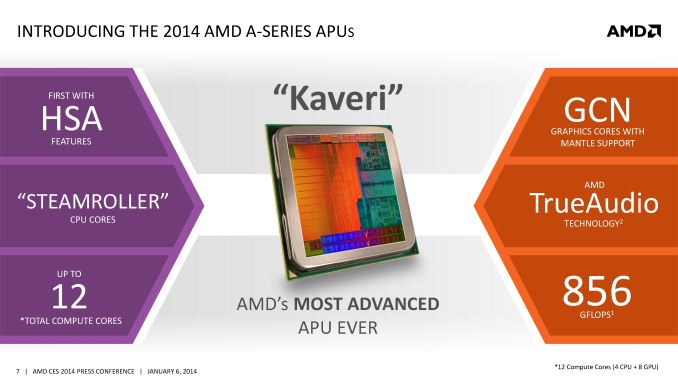
_575px.jpg)
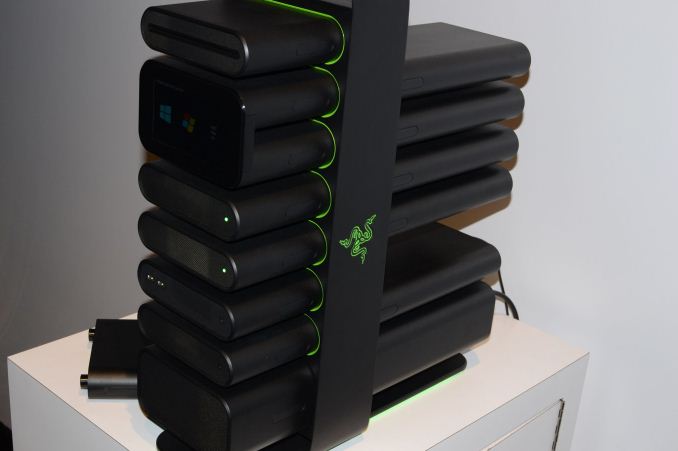

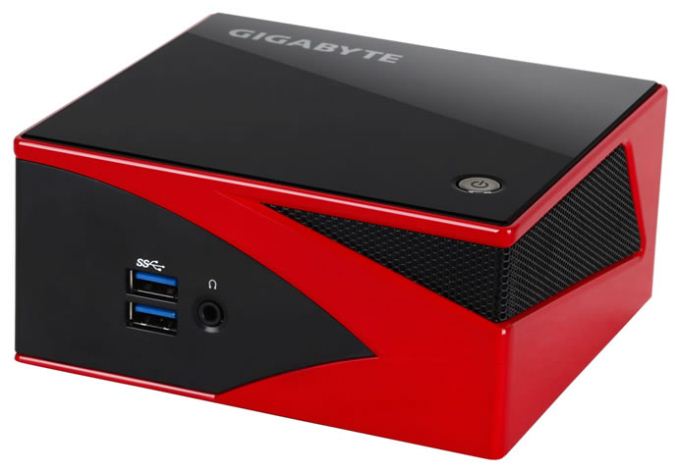


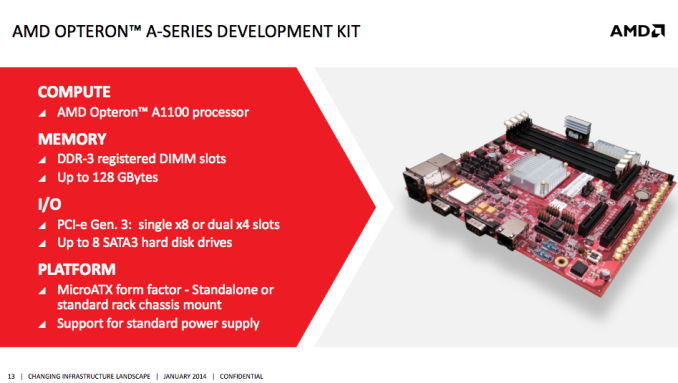
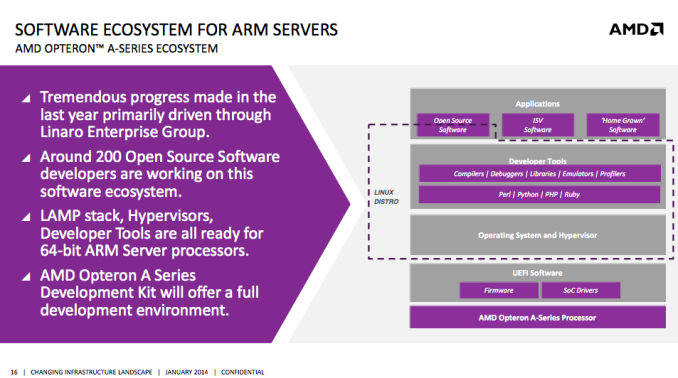
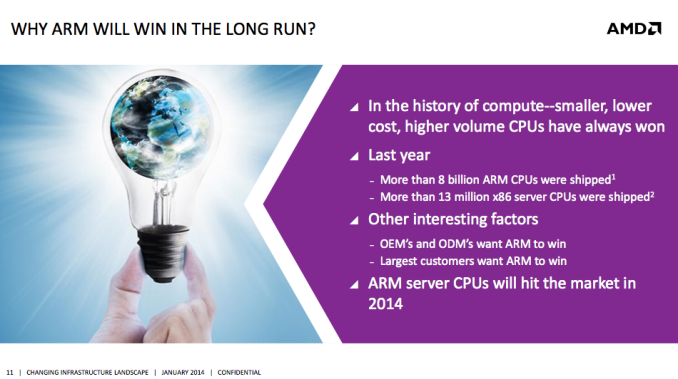
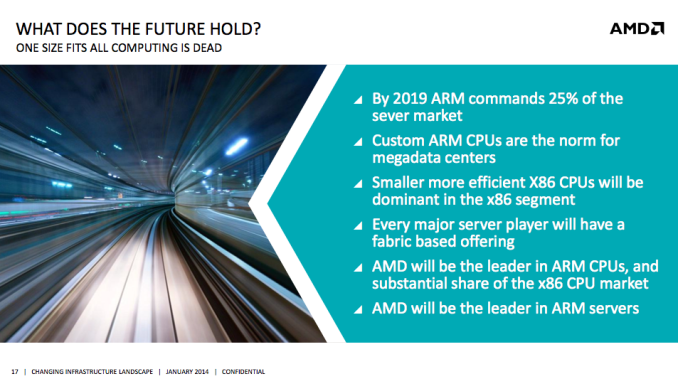
_575px.JPG)

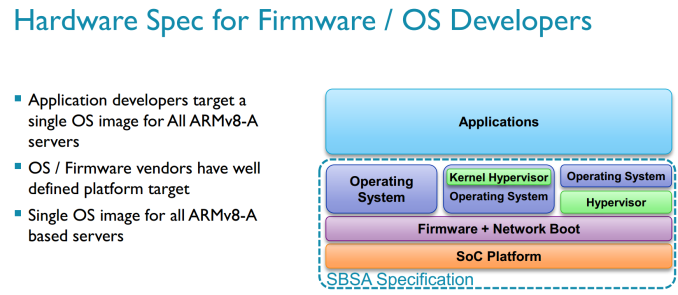
















Bookmarks